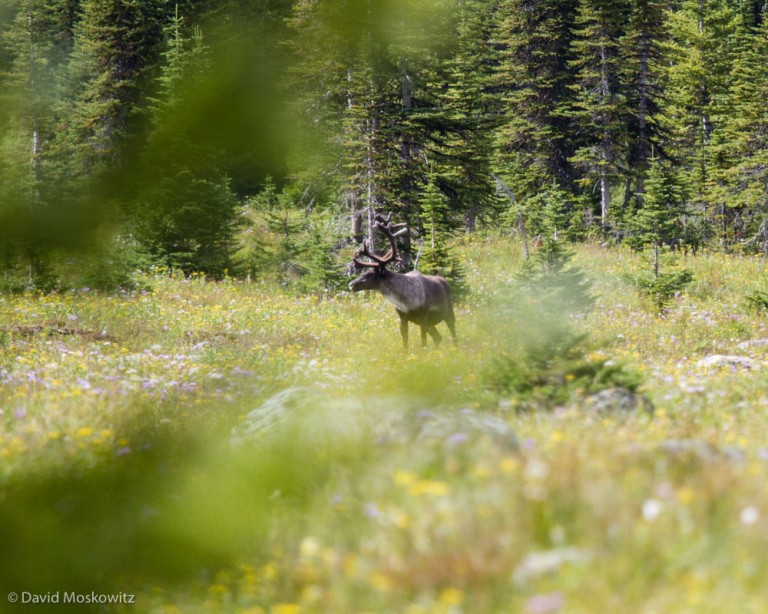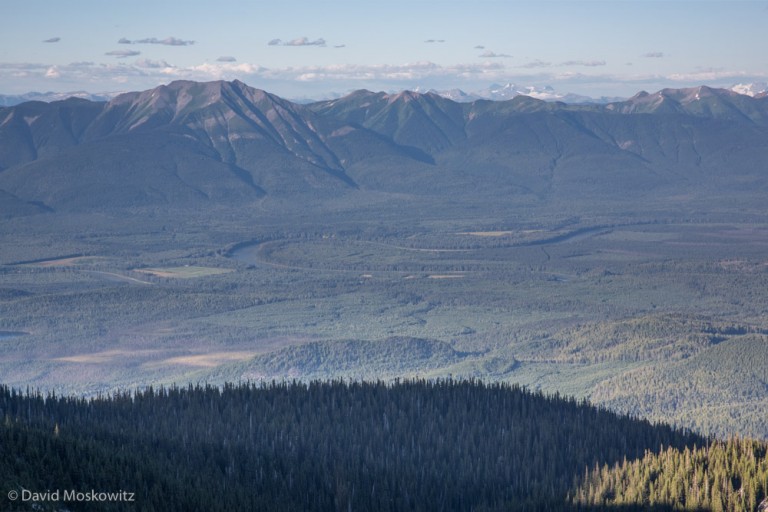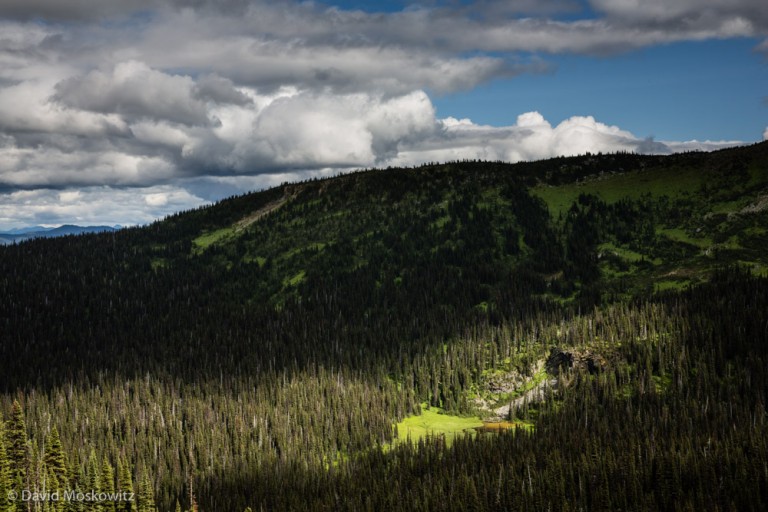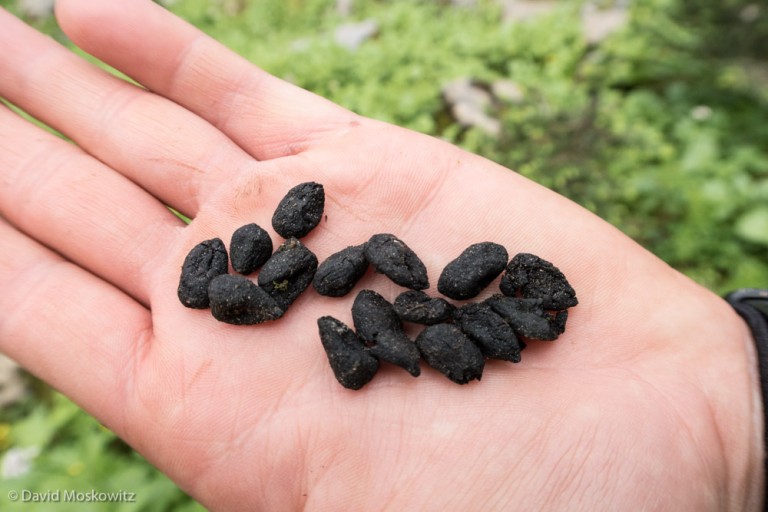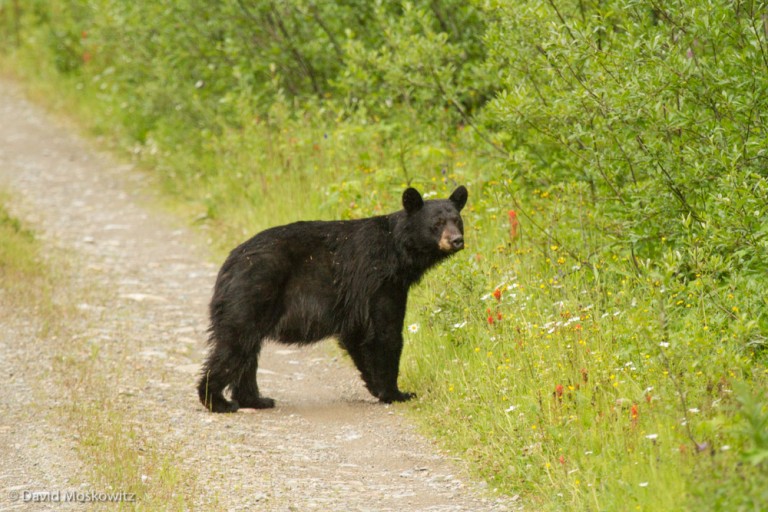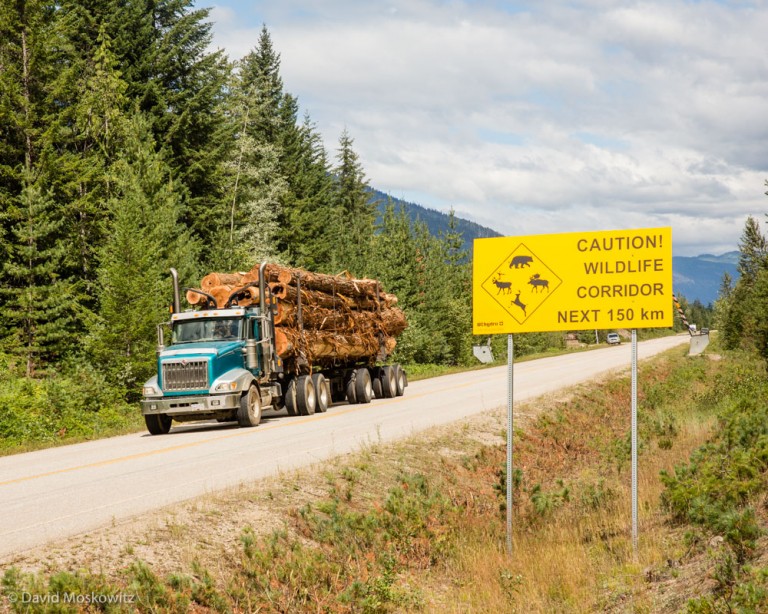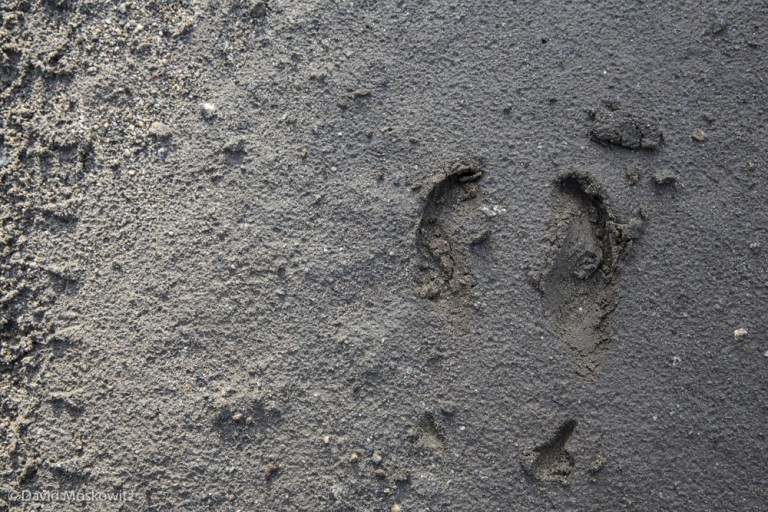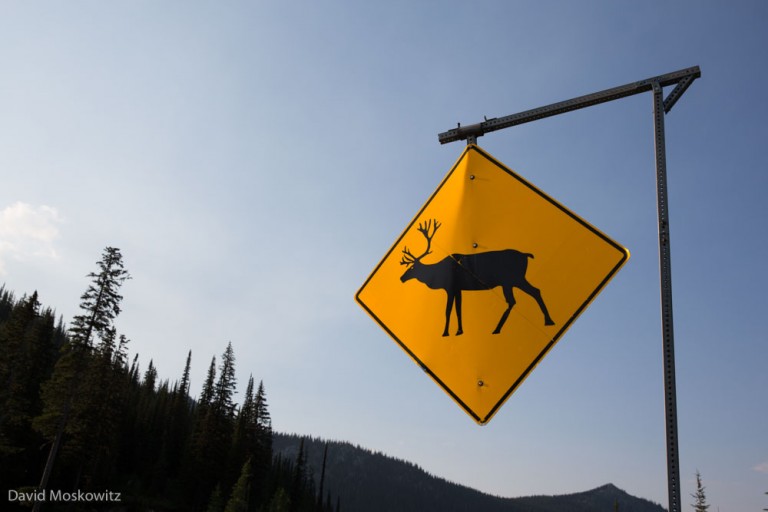After 28 days searching for mountain caribou, exploring the places they call home, or have recently disappeared from, here is a summary of some of what I discovered:
Marcus Reynerson making his way across a wet meadow system in the Tonquin Valley, Rocky Mountains. Jasper National Park.
- If you are in mountain caribou habitat, there is a pretty good chance you are either getting harassed by mosquitos, enduring a cold wet summer storm, or both.
Fresh snow on the summit of a peak in the Columbia mountains after a summer storm.
- There are a lot of long logging roads in western Canada and if you are going to find mountain caribou, it will likely be all the way at the end of them, where clear cuts give way to the last stands of uncut forest at the tops of mountain valley and along ridge-lines.
The end of 88 km (55 miles) of logging roads in the Seymour River watershed. Here avalanche chutes mix with recent clearcuts of inland temperate rainforest and remnant patches of old cedar forests where caribou still linger.
- The threats to mountain caribou are varied across their range and even huge national parks and provincial preserves are not necessarily effective by themselves to protect these animals.
The Tonquin Valley, accessible only by trail, and completely contained within Jasper National Park, is home to the largest remaining concentration of caribou in the park but even here caribou numbers are declining rapidly.
- Climate change is here now.The effects of climate change are readily apparent already in many places where mountain caribou live.
Mount Edith Cavell, a famous peak and glacier in Jasper National Park and area still occupied by caribou. Like mountain environments around the globe, the glaciers in the Canadian Rockies and Columbia mountains are retreating quickly. Most of the glaciers I observed while in the field had no accumulation zone anymore, leaving them as large blocks of ice melting in the warming climate.
- Doing nothing is doing something, but perhaps not the something we want to do. Without landscape level conservation measures and ongoing agressive management of caribou and other species of wildlife caribou are ecologically connected to, mountain caribou will likely disappear very soon from much of their current range, as they already have from many places they recently existed. Much of this management is controversial and/or highly invasive to the wildlife and the humans who live, work, and play in caribou habitat including things like culling moose and deer populations, killing entire packs of wolves, landscape scale cessation of logging and or oil and gas mining activity which is the basis of the regional economy, restrictions on winter recreation activities, also an important regional revenue stream.
Moose tracks in the mud in the southern Selkirks. On my first trip to the area in 2009 I found only caribou sign in the area. On this trip all I could find was moose, elk and deer. Burgeoning moose and deer populations across much of the range of mountain caribou have lead to increased predation on caribou from wolves, mountain lions, and other carnivores whose populations are tied to moose and deer.
The survival of mountain caribou is not at all assured across much of their range. In the weeks and months to come I will continue to be researching this topic, planning future trips back to caribou country, collaborating with conservation organizations to help get the word out about this pressing conservation topic. Stay tuned!







